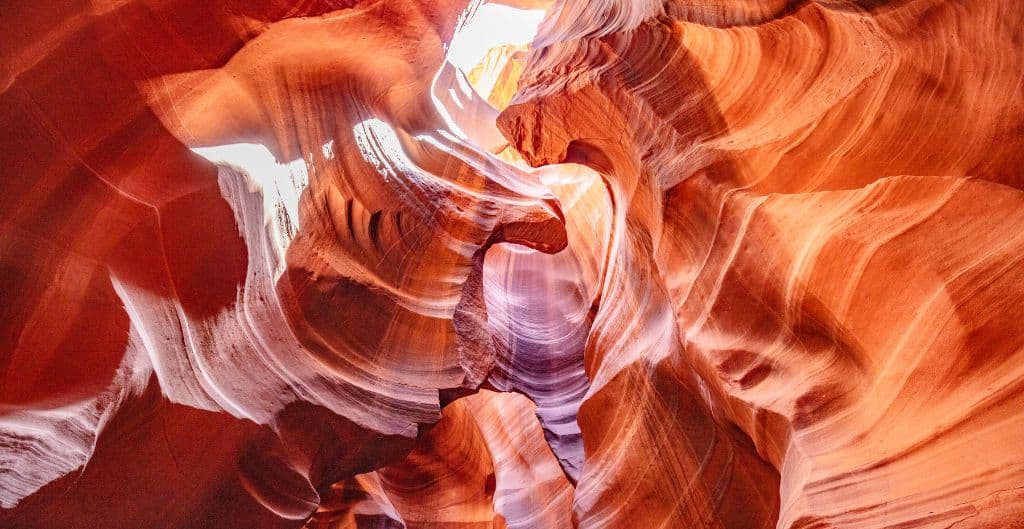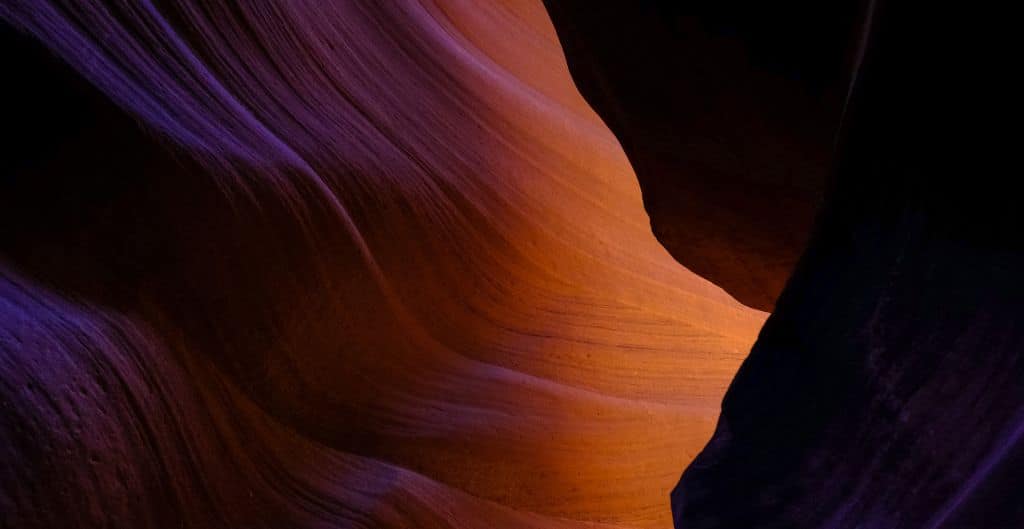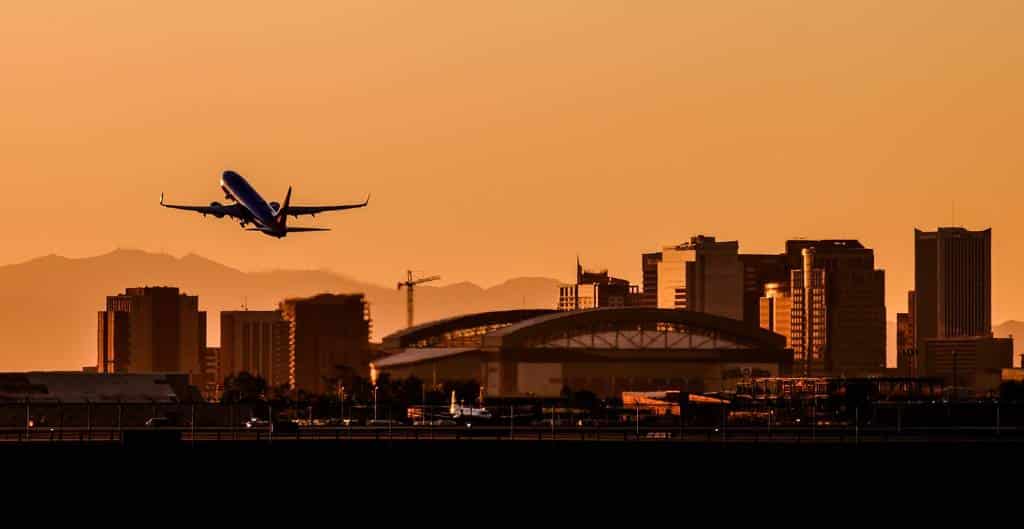Antelope Canyon, an awe-inspiring masterpiece of nature and a sought-after tourist destination, is celebrated for its flowing, smooth sandstone walls that glisten under sun rays seeping from above. Nestled in the heart of the American Southwest, this slot canyon—deep and narrow—was carved over eons by water rushing through rock.
We’ve put together a comprehensive guide for those planning a trip to visit Antelope Canyon. Our objective is to ensure you are fully prepared to enjoy and explore this amazing natural wonder in a manner that is respectful, safe, fun, and enriching.
We aim to cover everything you need to know, from the history and cultural significance, to practical details like how to get to Antelope Canyon, the best times to visit, and guided Antelope Canyon tour options. Join us as we unravel the wonders of Antelope Canyon and equip you with valuable insights and tips for visiting Antelope Canyon.
Where & What is Antelope Canyon?
Found in the northernmost part of Arizona, Antelope Canyon resides within the vast expanse of Navajo Nation (roughly the size of West Virginia). Antelope Canyon also lies at the heart of the Grand Circle, which includes other beautiful sights like Monument Valley, Grand Canyon, and Zion National Park.
Antelope Canyon is actually composed of two separate sections: Upper Antelope Canyon, known as “The Crack,” and Lower Antelope Canyon, known as “The Corkscrew.” The surreal, wave-like structures of the sandstone, created over many thousands of years by erosion, present stunning patterns of colors, lights, and shadows, attracting photographers and nature enthusiasts from all around the world. A visit to Antelope Canyon offers a unique opportunity to delve into the heart of the Earth’s natural beauty while also allowing easy access to other iconic natural wonders in the vicinity.
History, Culture, & Geology of Antelope Canyon
Antelope Canyon holds deep historical and cultural significance for the Navajo people, whose land encompasses the canyon. It’s not just a magnificent geological formation but also a sacred site that embodies the time-honored traditions and spiritual beliefs of the Navajo Nation.
The Navajo name for Upper Antelope Canyon is “Tsé bighánílíní,” which means “the place where water runs through rocks,” a testament to the canyon’s creation through erosion by flash floods over many centuries. Lower Antelope Canyon, or “Hazdistazí,” translates as “spiral rock arches,” capturing the distinctive shapes and curves sculpted into the sandstone. Antelope Canyon received its English name from the herds of Pronghorn Antelope that once roamed the area.
For the Navajo people, Antelope Canyon is a place of spiritual significance. The sweeping forms of the sandstone, the play of light and shadow throughout the day, and the hushed, isolated ambiance deep within the slots all contribute to a sense of reverence and peace. The canyon is seen as a monument to the power of natural forces and the passage of time, themes prevalent in Navajo culture.
Antelope Canyon, like other slot canyons, was formed over millions of years through a dual process of erosion. The Navajo Sandstone that forms the canyon was initially eroded by flash floods carrying debris that acted like sandpaper, cutting through the rock layers. Over time, this process carved out the deep and narrow passageways. Rainwater, especially during monsoon seasons, gushes into the extensive basin above the slot canyon sections, picking up speed and sand as it rushes into the narrow passageways, steadily deepening and sculpting them.
The second process, called subaerial erosion, involves the natural weathering of the rock faces when exposed to wind and thermal stress. Over thousands of years, these processes combine to create the smooth, flowing shapes and ‘waves’ in the rock that the canyon is famous for.
Upper & Lower Antelope Canyon
When deciding whether to visit Upper vs. Lower Antelope Canyon, there are a few things you can consider.
Upper Antelope Canyon, or “The Crack,” is the most frequently visited, mainly due to its ground-level entrance requiring no climbing. The canyon walls rise 120 feet above the stream bed, making it impressively deep but not very long. As sunlight descends directly into the narrow canyon, it illuminates the twisting sandstone walls, creating light beams during certain times of the day and year.
Lower Antelope Canyon, or “The Corkscrew,” requires some navigation, including staircases and narrow passages. It’s longer, narrower, and more intricate than the upper section. The sunlight in Lower Antelope Canyon tends to be more diffused and indirect, creating a more subtle, glowing effect on the sandstone walls.
Both sections offer unique perspectives and experiences, so choosing between them often comes down to personal preference, fitness level, and photography interests. Our personal preference is Lower Antelope Canyon.
Best Time to Visit Antelope Canyon
The best time to visit Antelope Canyon depends on the experience you seek—whether you’re a passionate photographer chasing the perfect light, a nature lover wanting to avoid the crowd, or a first-time visitor hoping to witness its general splendor.
Weather and Seasons
Antelope Canyon experiences hot, dry summers and cool winters. Spring (March to May) and Fall (September to November) are the most comfortable seasons, with mild temperatures that make exploring more enjoyable. Summer (June to August) can be quite hot, with temperatures sometimes rising above 100°F . Winter (December to February) is colder and can sometimes see temperatures below freezing, especially at night.
Monsoon Season & Flash Floods
From June to September, the region undergoes its monsoon season, with the potential for thunderstorms and heavy rain. Flash floods are a risk during this time, and occasionally, the canyon may close due to these safety concerns.
Best Time for Photography
For photographers, the time of day significantly impacts the quality of images you can capture. In Upper Antelope Canyon, the most coveted moment is around midday when the sunbeams descend directly into the canyon, illuminating the rock’s swirling patterns and creating dramatic light shafts. This phenomenon typically occurs from late March to early October. Lower Antelope Canyon provides more diffused and consistent light throughout the day, which also results in stunning photographs.
Peak Tourist Season
The peak tourist season at Antelope Canyon is from late spring to early fall, coinciding with the best photographic conditions. During this time, the canyon can get quite crowded, and tours can sell out quickly. That said, Lower Antelope Canyon has only one-way traffic, and groups are limited to 15 people at a time.
How to Get to Antelope Canyon
Getting to Antelope Canyon is quite straightforward once you know the various options available. Here’s how you can make your way to this stunning location.
Airports
Page Municipal Airport (PGA): Located in Page, Arizona, this is the closest airport to Antelope Canyon but has VERY limited flight options and few (if any) rental cars.
Flagstaff Pulliam Airport (FLG): Located in Flagstaff, Arizona, approximately 135 miles from Antelope Canyon.
Phoenix Sky Harbor International Airport (PHX): Located in Phoenix, Arizona, approximately 280 miles from Antelope Canyon.
By Car
Car rentals are available at all these airports. However, they can be hard to come by or extremely expensive during busy seasons. Depending on which airport you fly into, the drive is anywhere from 2–4 hours.
Tour Antelope Canyon: Choosing the Right Guides
Since Antelope Canyon lies within the Navajo Nation Reservation, independent exploration is not allowed. Visitors MUST be accompanied by an authorized guide.
Grand Canyon Adventures offers a daily guided Antelope Canyon tour that also includes a visit to Horseshoe Bend. Departing from Flagstaff, this trip allows you to see two of the most magnificent sights in the Southwest. You don’t have to worry about transportation, and you will have our professional guides with you the entire time. Our Antelope Canyon & Horseshoe Bend tour also includes all entrance fees, lunch, drinks, and even a stop at Glen Canyon Dam to get a beautiful view of the Colorado River and Lake Powell. Be sure to book this tour well in advance, as they are all likely to sell out during the busier times of year (generally March–September).
Safety & Precautions
Antelope Canyon, while stunning, does present some natural hazards and safety concerns that visitors need to be aware of.
Flash Floods
The canyon is prone to flash floods, especially during the monsoon season from July to September. If there is any risk of flooding, tours will be canceled. Generally, we are able to re-enter the canyon within a day or two, but it is wise to plan a little extra time and flexibility during monsoon season.
Hydrate Hydrate Hydrate
The Arizona desert can be extremely hot and dry. We also recommend bringing at least 2 times the amount of water you think you will need.
Layer Up
Desert temperatures can fluctuate greatly between day and night. Dress in layers to be prepared for hot midday sun as well as potentially cool early mornings and evenings. In the summer, light, breathable clothing is recommended to cover your skin to protect from the sun. A wide-brimmed hat, sunglasses, and sunscreen are also essential.
Footwear
Wear sturdy, comfortable shoes, as you’ll be walking on sandy and uneven surfaces. Hiking boots or sports shoes with good grip are the best options.
It is also important to note that Lower Antelope Canyon requires climbing several metal staircases, and both canyons involve walking through narrow passageways. Those with mobility issues should consider this when planning their visit. Neither the Upper nor the Lower Antelope Canyon is wheelchair accessible.
Honoring the Heritage of Antelope Canyon
As you plan your adventure to Antelope Canyon, it’s crucial to remember that this spectacular location is much more than a feast for the eyes. It’s a place of deep cultural significance to the Navajo Nation and an exquisite example of nature’s artwork. Respect for this extraordinary locale is paramount. Treat your journey as a privilege and your presence as that of a thoughtful guest. The natural and cultural heritage of Antelope Canyon calls for our utmost respect and consideration. Here are some essential practices to follow:
Responsible Tourism Practices
Avoiding littering and vandalism is not just a recommendation—it’s a responsibility. Leaving no trace should be your mantra. Preserve the enchanting beauty of the canyon for future generations by carrying out any trash you bring in. Remember that the sandstone formations are delicate and took millions of years to form, so refrain from touching the walls more than necessary and never carve or mark them.
Supporting the Local Community
Your visit to Antelope Canyon is an opportunity to contribute positively to the local Navajo community. Participating in guided tours supports local businesses and provides a source of income that helps sustain the community. Additionally, consider buying authentic local crafts or eating at local Navajo-run restaurants. Your support helps keep the culture alive and thriving.
Respecting Navajo Traditions & Beliefs
Remember, Antelope Canyon is sacred to the Navajo. Treat it as you would any religious site, with reverence and respect. Listening carefully to your Navajo guide, you’ll learn about the canyon’s significance in their culture, legends, and spiritual beliefs. Respect their stories and traditions, and remember not to interrupt or question their authenticity.
By practicing these etiquette guidelines, you can contribute to the preservation of Antelope Canyon’s natural beauty and cultural significance, ensuring it remains a cherished destination for generations to come.
Preserving Antelope Canyon for Generations to Come
Antelope Canyon stands as a testament to the timeless beauty of nature and the rich tapestry of Navajo history and culture. It is a place where the grandeur of geology intersects with human reverence and respect. A journey to this stunning slot canyon invites you to immerse yourself in an unforgettable spectacle of light, color, and form, while deepening your understanding of Navajo heritage. However, a trip to Antelope Canyon is not just about what we can witness and capture, but also about how we can contribute to preserving its majesty and respecting its sanctity. It is a canvas where past, present, and future intertwine, reminding us of our responsibility to honor nature and the cultures that revere it. So, as you prepare to navigate the beautiful labyrinth of Antelope Canyon, remember to tread softly, look deeply, and carry the awe it inspires into your daily life. It’s not just about visiting a location—it’s about experiencing and honoring a slice of our shared world that’s rich in history, culture, and natural splendor.











